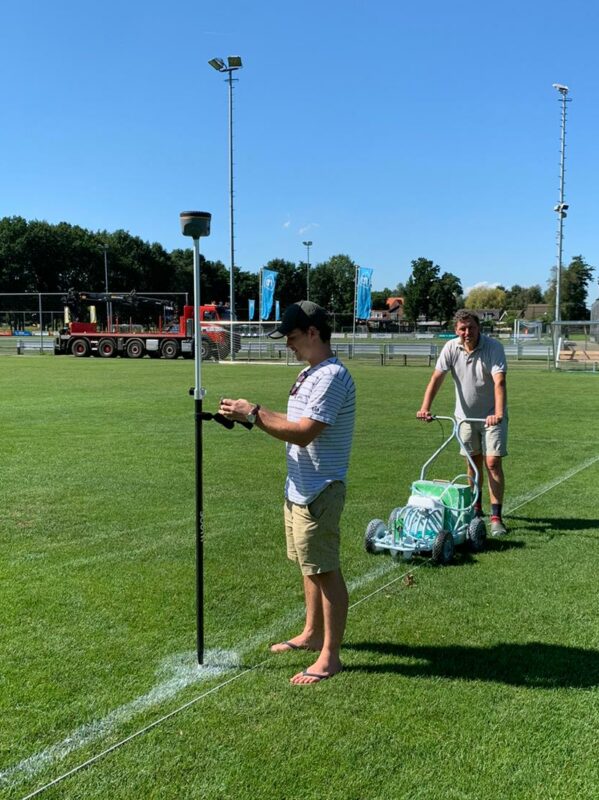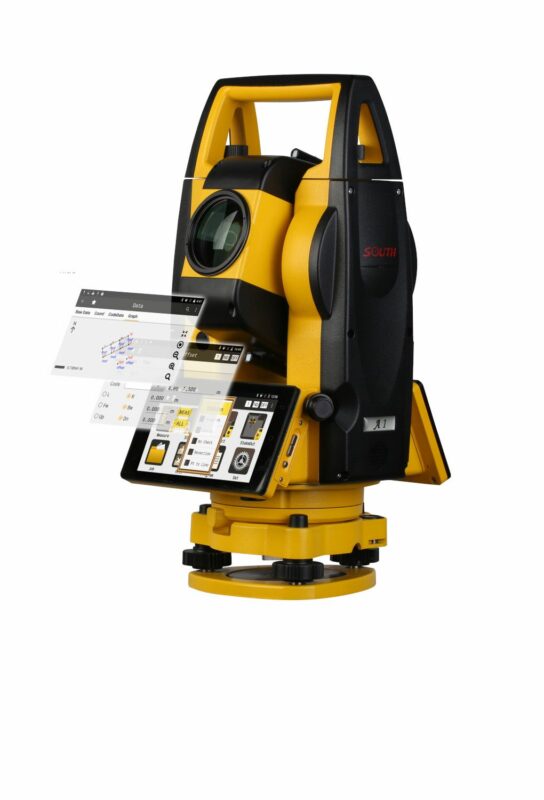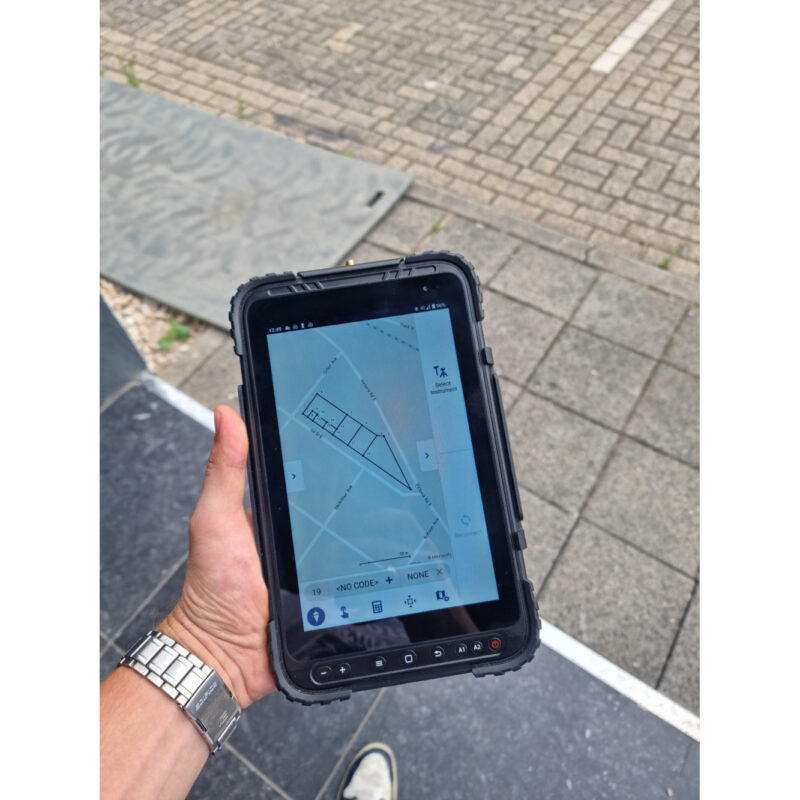GNSS
What is RTK VRS: A Guide on the technology
Real-Time Kinematic (RTK) technology is a method used to enhance the precision of GPS (Global Positioning System) measurements. It allows for centimeter-level accuracy in real-time, making it an ideal solution for various industries such as construction, surveying, and agriculture.
One of the most popular ways to utilize RTK technology is through the use of a RTK VRS (Virtual Reference Station) network. In this article, we will discuss what RTK VRS is, how it works, and the benefits it offers.
What is RTK VRS?
RTK VRS is a network of GPS reference stations that are connected to a central server. These reference stations continuously collect and process GPS data, and the server then uses this data to create a correction signal that can be used by RTK-enabled GPS receivers.
The correction signal is broadcasted over the internet or a dedicated radio frequency, allowing users to achieve centimeter-level accuracy in real-time, without the need for a physical reference station on-site.
How RTK VRS works
The technology behind RTK VRS is based on the principles of GPS (Global Positioning System) and differential correction. GPS is a satellite-based navigation system that allows users to determine their precise location and track their movement. However, the accuracy of GPS measurements is limited by various sources of error, including atmospheric conditions, satellite orbits, and receiver noise.
RTK VRS addresses these limitations by using differential correction to improve the accuracy of GPS measurements. Differential correction works by comparing the GPS data collected by a reference station to the data collected by a mobile receiver. The reference station is a fixed location that has a known, precise location. The mobile receiver is the device that the user carries around, which can be a GPS receiver, a smartphone, or a tablet.
The reference station continuously collects and processes GPS data, and the mobile receiver does the same. The data collected by both devices is then compared in real-time to calculate the error or “delta” between the two sets of data. This delta is then used to create a correction signal, which is broadcasted to the mobile receiver over the internet or a dedicated radio frequency.
The mobile receiver then uses this correction signal to adjust its measurements, resulting in a much more accurate position. The correction signal is calculated by the VRS Network server, which is a server that stores the data from all the reference stations in a network.
In summary, RTK VRS uses GPS and differential correction technology to enhance the precision of GPS measurements. It works by comparing the GPS data collected by a reference station to the data collected by a mobile receiver, and using the delta to create a correction signal that is broadcasted to the mobile receiver. This correction signal is then used to adjust the measurements of the mobile receiver, resulting in a much more accurate position.
RTK VRS works by comparing the GPS data collected by the reference stations to the data collected by the GPS receiver in real-time. This data is used to calculate the error or “delta” between the two sets of data.
The correction signal, which is based on this delta, is then broadcasted over the internet or a dedicated radio frequency to the GPS receiver. The receiver then uses this correction signal to adjust its measurements, resulting in a much more accurate position.
Benefits of RTK VRS
-
Increased Accuracy: The main benefit of RTK VRS is the increased accuracy it offers. With centimeter-level precision, users can make more accurate measurements, resulting in improved efficiency and reduced errors.
-
Cost-Effective: RTK VRS eliminates the need for a physical reference station on-site, which can save users a significant amount of money in terms of equipment and maintenance costs.
-
Wide-Area Coverage: RTK VRS networks are designed to cover a wide area, which means that users can access the correction signal from virtually anywhere, making it ideal for large projects or projects in remote areas.
-
Real-time Capabilities: RTK VRS provides real-time correction signals, which means users can make accurate measurements in real-time, resulting in improved efficiency and faster decision-making.
-
Scalable: RTK VRS networks can be easily scaled to meet the needs of any project, whether it’s a small survey or a large-scale construction project.
-
Flexibility: RTK VRS networks can be accessed through a variety of devices such as smartphones, tablets, and laptops, providing users with more flexibility and convenience.
In conclusion, RTK VRS is a powerful technology that offers a cost-effective, accurate and flexible solution for various industries. The wide-area coverage, real-time capabilities, and scalability make it an ideal solution for large projects or projects in remote areas. With the increasing demand for precise measurements, RTK VRS is becoming an essential tool for many industries.
Industries that Benefit from RTK VRS
-
Surveying: Surveying is one of the industries that benefits the most from RTK VRS. With the ability to achieve centimeter-level accuracy in real-time, surveyors can make more accurate measurements, resulting in improved efficiency and reduced errors. This is particularly beneficial for land surveying, construction, and engineering projects.
-
Agriculture: RTK VRS technology is also being used in the agriculture industry. With the ability to achieve precise measurements, farmers can optimize their crop yields, reduce input costs, and improve overall efficiency. Applications of RTK VRS in agriculture include precision planting, crop mapping, and yield monitoring.
-
Construction: RTK VRS technology is also being used in the construction industry. With the ability to achieve precise measurements, construction companies can improve the efficiency of their projects, reduce errors, and ultimately save money. Applications of RTK VRS in construction include site preparation, excavation, and paving.
-
Mining: RTK VRS technology is also being used in the mining industry. With the ability to achieve precise measurements, mining companies can improve the efficiency of their operations, reduce errors, and ultimately save money. Applications of RTK VRS in mining include drill and blast, and grade control.
-
Emergency Services: Emergency services can also benefit from RTK VRS technology. With the ability to achieve precise measurements, emergency services such as search and rescue can improve their efficiency, reduce errors, and ultimately save lives. Applications of RTK VRS in emergency services include search and rescue, and incident management.
Choosing a RTK VRS Network
When choosing a RTK VRS network, there are several factors to consider. These include:
-
Coverage: The coverage of the RTK VRS network is important, as it will determine the areas where you can access the correction signal. Make sure to choose a network that covers the area where you will be working.
-
Reliability: The reliability of the RTK VRS network is also important, as it will determine the availability of the correction signal. Make sure to choose a network that has a high level of reliability.
-
Cost: The cost of the RTK VRS network is important, as it will determine the overall cost of using the technology. Make sure to choose a network that offers a cost-effective solution.
-
Technical support: The technical support provided by the RTK VRS network is important, as it will determine the level of assistance you will receive if you encounter any issues. Make sure to choose a network that offers a high level of technical support.
In conclusion, RTK VRS is a powerful technology that offers a cost-effective, accurate, and flexible solution for various industries. With the ability to achieve centimeter-level accuracy in real-time, RTK VRS can improve the efficiency of your projects and ultimately save you money. When choosing a RTK VRS network, make sure to consider factors such as coverage, reliability, cost, and technical support.



